Dear Artist,
A lot of stuff has been written about writer’s block, mainly because writers write. At the same time, there’s been a surprising lack of guidance in the parallel condition of painter’s block, mainly because painters paint. While many fight it daily and some never experience it at all, I always thought I might try to do something about the shortfall. Here are a few thoughts:
The sheer size and daunting length of a novel do not equate to a small easel painting that may take only a short time. Painters, identifying bite-sized projects suited to their current spans of concentration, can go from one work to another, randomly or in rapid sequence. Short-duration projects are block beaters. Painters can take wisdom from prolific haiku masters. Reducing individual project size compounds satisfaction and helps stickhandle the way. Rather than three medium-sized paintings a month, think of 30 small ones. Smaller works are more readily chuckable.
Another block beater is the “Working Without Plan” system. Blocks often occur in the planning stage and ideas get aborted before the brush hits the canvas. Just as writers learn to start writing before they know what they’re writing, painters need to squeeze out and simply begin.
Further, blocks occur through the commonplace error of letting the cat out of the bag. Verbalization eviscerates desire. Talking blocks action. It’s been my persistent observation that mute artists are more consistently productive than verbal ones.
Then there’s the tyranny of the jaded brain. “Been there, done that, got the t-shirt” haunts both the mature and the overeducated. This form of ennui requires a reinvestment in innocence, a return to the childlike view and a simple commitment to play. Not easy for some, but doable. Just as the block itself can be a self-delusory avoidance activity, the release to play is just another self-delusion needed for creative growth.
Painter’s block is a kind of creative blindness. Fortunately a temporary disability, it obscures the limitless depth of human invention. The reasons for the blindness vary from artist to artist, but all forms can be neutralized, if not beaten, by rest, change, action, going smaller, going kiddie, and being quiet.
Best regards,
Robert
PS: “The block is an entirely imaginary, self-inflating disease afflicting both nothing-to-say professionals and not-knowing-how-to-say-it amateurs.” (Ray Robertson, novelist)
Esoterica: Page Fright — Tools, Tricks and Fetishes of Famous Writers by Harry Bruce, is the latest book to probe these mysteries. He thinks creative folks need to make a leap of faith and begin to feel that nothing but the successful execution of their chosen art can deliver true happiness. Seeing our art as “important” can both stymie and empower us. If day-to-day happiness is important to you, the theory goes, not conquering these stupid blocks invites a perennial state of misery.
This letter was originally published as “How to beat Painter’s Block” on September 29, 2009.
Have you considered a Premium Artist Listing? With each letter, an artist is featured at the bottom of this page. The Premium Artist Listings are a means of connecting artist subscribers through their work. Proceeds from each listing contribute to the production of The Painter’s Keys.
“It is no good getting furious if you get stuck. What I do is keep thinking about the problem but work on something else. Sometimes it is years before I see the way forward.” (Stephen Hawking)
Featured Workshop
A 3 day Non-Objective Painting Workshop with Cat Tesla and Julie Schumer
in Santa Fe, New Mexico
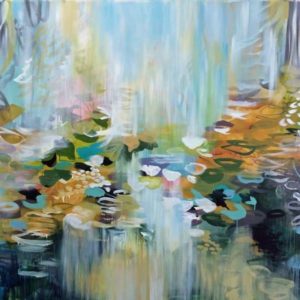 Explore and develop your personal voice in the inspirational environment of Santa Fe. We will explore composition, color, value and how to work on multiples at the same time. Find your own signature with different mark making tools and learn how your marks enliven your paintings. Learn how to harmonize any palette, move from analysis paralysis to painting success and to trust your artistic choices. This intensive 3 day workshop is perfect for the beginning artist who has some experience using acrylic paint.
Explore and develop your personal voice in the inspirational environment of Santa Fe. We will explore composition, color, value and how to work on multiples at the same time. Find your own signature with different mark making tools and learn how your marks enliven your paintings. Learn how to harmonize any palette, move from analysis paralysis to painting success and to trust your artistic choices. This intensive 3 day workshop is perfect for the beginning artist who has some experience using acrylic paint.
August 14, 15, and 16
9 am to 4:30 pm
$950 Bring a friend and save $50 each
https://artbycat.com/page/1-Workshops-Prints.html
Featured Artist
My art represents an artistic journey that has been on-going for more than thirty-five years with help and guidance from many wonderful artists. Now, with years of plein-air painting experience, study and solo exhibitions, I believe that my current work has reached its highest level, reflecting the depth of my absorption in the wonder and beauty of the world around me. I have learned that, as an artist, I will never stop looking for better ways to express my feelings in art and that struggling to more fully understand myself is integral to my painting; a philosophy that was part of every workshop I taught. Still is.


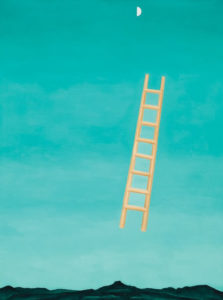
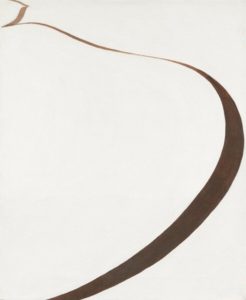
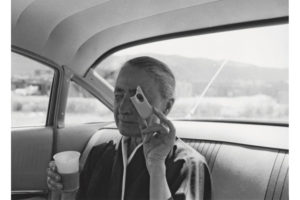
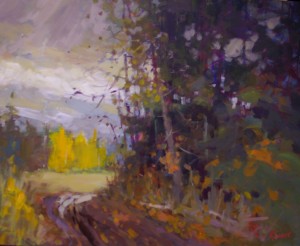



12 Comments
I have found I work in 90 days of creativity and 30 days of doing no art. I read about it, look at it, go to gallery openings and so forth. Then something will catch my attention, sometimes a shadow on a wall, a vagrant thought I passed over or forgot and the question “what if” arises and it begins anew. Look for patterns in your productivity.
Creativity
Needs ambition ignition….
Consummation sparks.
Possibilities
Fill our studio spaces….
Lets just have a lark!
With so many obstacles in our way, it is a wonder we paint at all! So far, I am one of those painters that Seems to always have more ideas than my brushes can handle. But this is my general life situation, not just painting. I am often asked if I paint everyday and I don’t. But I think about painting almost everyday. I follow my natural energy rhythms and adjust as I go. For example, I was going to do a small 8 x 10 inch acrylic plein air painting sketch this morning at a 7:30 am location. I packed last evening and it was all I thought I had the energy to do. But when I am awoke just before 6:00 am, it was so gorgeous light! So instead, I grabbed my oils and a 14 x18 inch canvas, along with the bigger French Box easel. It was the right choice. I tend to change things up if I feel like I need inspiration but then as often as not, I just sit with the blank moments and wait. There doesn’t seem to be a clear path but always a desired direction, one way or another. If one thing doesn’t work, then I try another and pretty soon the paint is flowing and I am off!
One of my favorite one-liners is “Lower your standards!” That means keep the judge out of it.
I tell my students that artists wear 4 hats: a beret for inspiration, a hard hat for getting the work done,, one of those wigs the British judges wear, and the fedora as a business person to get your work into the world, whether it’s a gallery, online, teaching, gifts. You can only wear one hat at a time, but you can wear them all on the same day, I like my beret best when I go for a hike, the hard hat is usually battling with the judge, and that business hat could be worn more often. The judge is the tricky one. I need her to get better, but sometimes she is downright mean.
I love your various hat wearing analogy Annie. It is perfect!
This is such a fun analogy! I guess I don’t own a fedora. Many decades ago in art school I was told that if your work is good, galleries and buyers will come to you. This was terrible advice! Im now 75 with a closet full of very good paintings, awards, but no buyers or galleries. I cringe at the thought of marketing.
great ideas, i love this
Artists are a visual gang. We often get ideas like MM’s observations and everyday visual stimuli. My trick is to use the dip and drip process when I do my Chinese brush paintings. Using rice paper and puddles of Chinese natural colors, wad the rice paper and dip them quickly in each color while rotating the wad maybe adding an ink puddle for contrast. Do several. Leave to dry before opening. Voila ! You’ve got your background. Use as is or any part of it to start a composition. (also another option is marbling)
Love this idea. Thank you
After a lifetime of painting now and then I have completely lost the muse since having cancer and treatment for a whole year. I have many paintings on the walls and all I can think of doing is going over them!
Don’t mess up your paintings! I have recently gone through cancer, some surgeries, and radiation. It took everything out of my creative drive. I don’t know when your treatments ended, but it took well over a year before a hint of it surfaced. Before I began painting, in 1997, I did fibre art. The first little spark for me, that re-ignited my creativity was weaving. Last year I took a few painting workshops, felt so inadequate and unsure of myself, but I managed to get through them…with some embarrassing moments…was an absolute klutz . My work was nothing to write home about. I still grapple with being inspired, but slowly my muse is visiting me. These Covid days bring a lot of doubt, fear and negativity into our lives. Be patient with yourself. Your muse hasn’t disappeared, She or he will reappear when you least expect. Start with small steps, small work, strange colours, scribbles, childish marks, just to get your body into your art, and if you can be patient, your mind will follow suit. I still struggle, but it’s getting easier. Just, please, don’t give up on yourself.
“….not conquering these stupid blocks invites a perennial state of misery” indeed.